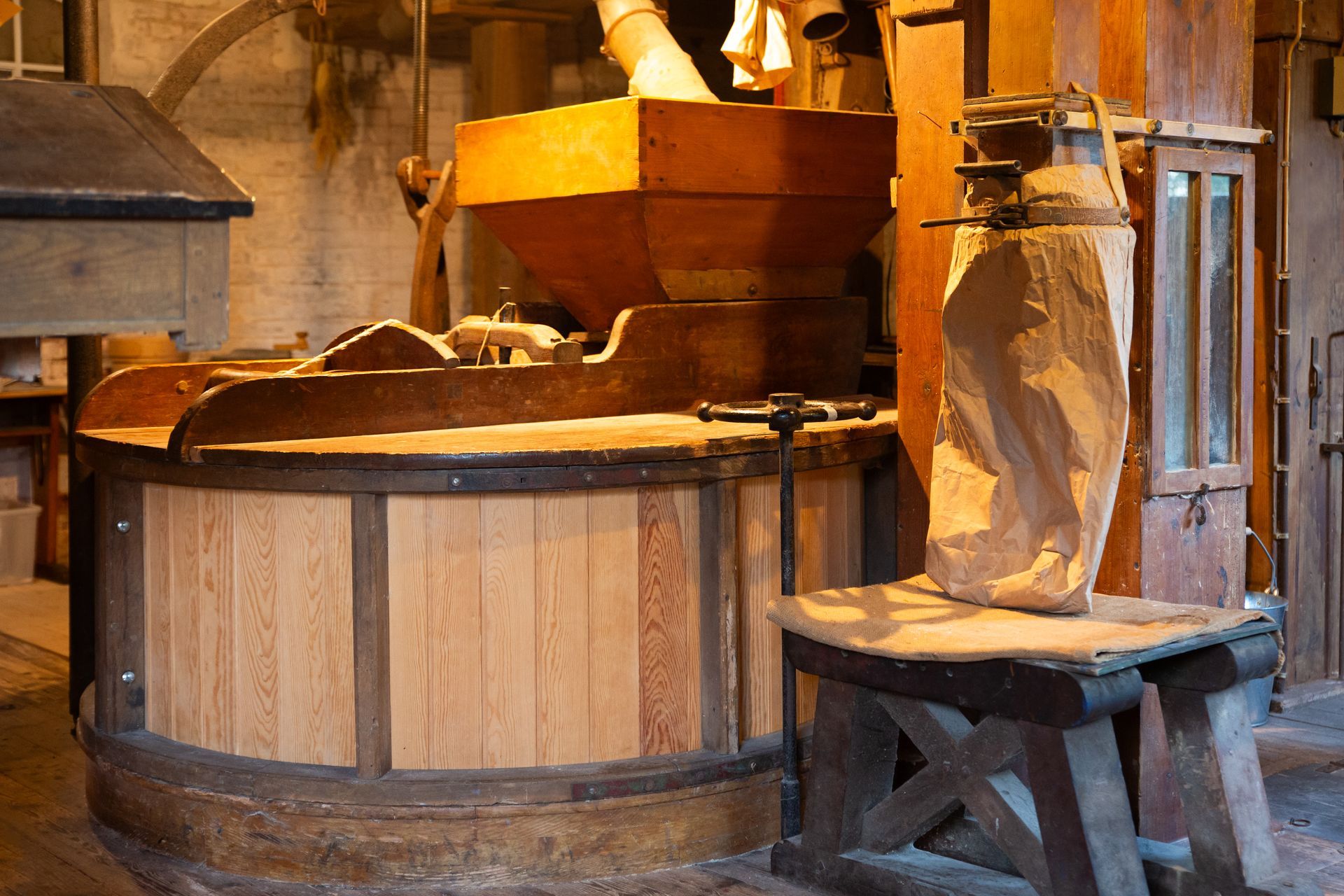Here Europe is investing in rural areas with the measure:
Mill history
Overview:
- 1847 First mill (Dutch mill with earthen wall) built by farmer Heinrich Borchers
- 1846/7 Fire destroys the Erdholländer
- 1851 Heinrich Borchers erected the current gallery on the same site on the old substructure
- 1853 Mill is rebuilt after a fire
- 1892 Heinrich Henke (1st generation) leases the mill
- In 1907 Heinrich Henke (2nd generation) bought the mill
- In 1909 he built the miller’s house
- 1948 Heinrich Henke (3rd generation) inherits
- From 1948 the mill was converted into a compound feed plant
- 1987 Cessation of milling operations
- In 2000, Marianne Ruröde (née Henke) inherits the property because her eldest son Heinrich (4th generation) died prematurely.
- 2006 Aileen and Helmut Hansing buy mill property
- 2007 Founding of the Labbus Mill Association; Establishment of road safety and first participation in the German Mill Day
- Since 2019, revision and repair of the grinding and conveying technology; expansion of the grinding technology for fine flour production
- 2020 Putting on the restored mill cap
- 2022 Reinstallation of the refurbished blinds and new construction of the gallery
Picture right: The mill, still with cod, and the newly built miller's house, around 1910. In the middle the miller Heinrich Henke (2nd generation) with his wife Marie (née Thiele).
The windmill in Labbus near Sulingen was built in 1847 as an earthen windmill (with an earthen wall). This was destroyed by fire in 1846/47, according to tradition due to arson. The current, larger gallery windmill was built by the mill builder Fahlenkamp from Bruchhausen on the same spot in 1851. (It is reported that this mill also burned down at least partially shortly afterwards and was rebuilt in 1853.) Both mills were built by Heinrich Borchers, a wealthy farmer from nearby Döhrel who owned large land and had a hunting ground. Of his four children, Karl, Doris, Sophie and Anna, Sophie stayed on her parents' farm in Döhrel.
Borchers had the Dutchman built without having the right to grind. As he also owned a small watermill on the Allerbeeke that had been built by his ancestors, he let it go under and took over its right to grind for the new windmill. He later had the watermill demolished. A long time ago there was another watermill on the Allerbeeke that powered a forge.
It is not known whether Borchers operated the new windmill himself or leased it out in the early years. From 1892 onwards he leased it to Heinrich Henke (1st generation), who was not a trained miller but made up for this with experience. Like the mill owner Borchers, he came from Döhrel, where his father Kurt Henke worked as a butcher, among other things.
The windmill in Labbus was still in commercial operation as a grist mill until 1987. Depending on the weather, milling was still done partly by wind and partly by electric motor. A rural trade and a shipping company were also operated from the property.
The blades of the windmill turned for the last time in the early 1990s. At that time, the mill was used for grinding mixed feed one last time until both mixers were full.
Heinrich Henke (3rd generation) died in 2000, his wife Frieda in 2004.
In 2006, Aileen and Helmut Hansing bought the mill property. The miller's house was renovated in 2006. In July 2007, the association for the promotion and preservation of the windmill was founded by committed people with the aim of making the windmill operational again and making it accessible to the public as a cultural asset. The mill association currently has two qualified volunteer wind and water millers on its team; two more are currently in training.
Mill operation
Historical documents
- General ledger of the mill operation Heinr. Henke Labbus, 1910-1928.
- Invoices from Heinr. Henke, mill owner 1922, 1928.
- Cash book of the mill operation 1968-1971.
General ledger Heinr. Henke 1910-1928
- General ledger 1910-1928 Name index
- General ledger 1910-1928 Page 1-93
- General ledger 1910-1928 Page 94-203
- General ledger 1910-1928 Page 204-255
- General ledger 1910-1928 Page 256-307
- General ledger 1910-1928 Page 308-384












































